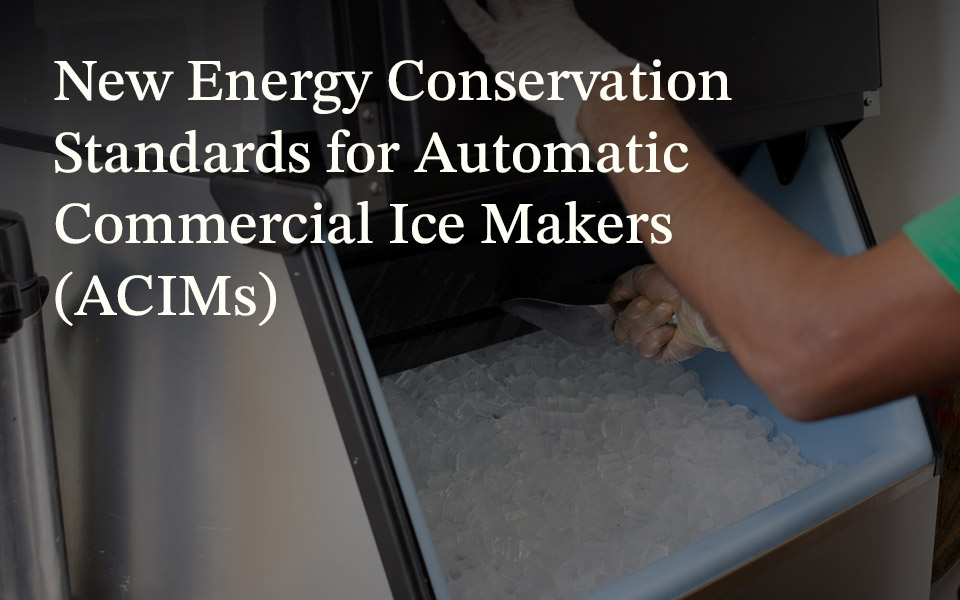Natural refrigerants remain viable among emerging options

I was recently asked by the editor of Accelerate America to offer my opinion on the viability of natural refrigerants, including CO2 (R-744), propane (R-290) and ammonia (R-714). Among the many emerging refrigerant alternatives, natural refrigerants check important boxes for owners and operators who are preparing for the rapidly changing commercial refrigeration landscape. View the full article here and read a summary of its key points below.

For more than a decade, natural refrigerants have factored prominently in the search for environmentally friendly refrigeration in both commercial and industrial sectors. We’ve seen the introduction of R-290 in micro-distributed, self-contained cases; increased global adoption of CO2 in centralized systems; and the emergence of ultra-low-charge ammonia, by itself as well as integrated with CO2 in cascade systems. As we kick off a new decade, we will likely continue to see these refrigerants progress along those established lanes.
Drivers for natural refrigerant adoption
Since their introduction, the drivers for natural refrigerant adoption have not changed. Most legacy refrigeration strategies rely on the use of high global warming potential (GWP) hydrofluorocarbon (HFC) refrigerants, and companies with sustainability objectives or regulatory mandates were among the first to make the transition to natural refrigerants — which by many are considered immune from regulatory-mandated GWP caps.
In 2020, the phase-down of HFCs remains a focus of global environmental regulations. From the Kigali Amendment to the Montreal Protocol and the European F-Gas regulations to the California Air Resources Board (CARB) and Environment and Climate Change Canada (ECCC), many countries, states and regions share the goal of an HFC phase-down.
It’s often said that there’s no such thing as a perfect refrigerant — and that’s certainly the case with natural options. But natural refrigerants are among the very few alternatives capable of meeting some of the more aggressive GWP targets. R-290 has a GWP of 3; CO2 has a GWP of 1; and ammonia has a GWP of 0. So from environmental and regulatory perspectives, this puts them in a class by themselves.
Characteristics and caveats
With decades of field use and research to draw from, the performance characteristics of natural refrigerants are well known. But each option has operating caveats that equipment owners must carefully consider before investing in a long-term refrigeration strategy.
-
- R-290offers excellent energy efficiencies, but as an A3 (flammable) refrigerant, safety regulations limit its use to small charges globally from 150g to 500g. R-290 is a natural fit for small-capacity, self-contained cases that require a lower charge and are hermetically sealed at the factory.
- CO2is a high-pressure refrigerant with a low critical point (87.8 °F) that determines its modes of operation (subcritical, or below the critical point; transcritical, or above the critical point). It also has a high triple point where the refrigerant will turn to dry ice. Systems must be designed to manage these characteristics, and operators must have access to qualified technicians.
- Ammonia has been used in industrial refrigeration for the past century, but its toxicity (B2L classification) presents challenges to equipment owners. Tightening safety regulations and the risk of exposure have led to system architectures designed to lower charges and move it out of occupied spaces.
Selecting a natural architecture
When evaluating natural refrigerant architectures, store formats and application requirements will often dictate the refrigerant choice. R-290 is well-suited for either smaller-format stores or as a spot merchandising option for larger stores. CO2 makes the most sense in larger stores seeking a centralized architecture alternative to HFCs. Ammonia is relatively rare in commercial applications but is finding its way into innovative architectures designed to mitigate its risks and benefit from its excellent performance characteristics.
-
- R-290, from integrated cases to micro-distributed — For nearly a decade, manufacturers have worked within the 150g charge limit to create self-contained, integrated cases, in which the refrigeration system (compressor and condensing unit) is built into the display case. These evolved into a micro-distributed approach for small stores, where multiple units share a water/glycol loop to remove excess heat. This approach provides very low-GWP, total-store cooling while keeping charges low, typically operating with 90% less refrigerant than a centralized system.
- CO2transcritical booster — CO2 came into prominence more than a decade ago in large supermarkets where centralized architectures are preferred. CO2 transcritical booster system technology continues to improve today, offering an all-natural solution for both low- and medium-temperature cooling. Compared to centralized HFC systems, CO2 transcritical boosters represent a completely different approach to system operation and servicing. Operators must acquire technicians that are trained to service CO2 systems and implement strategies for power outages in order to mitigate “stand-still” pressure while the system is off.
- CO2/ammonia hybrid subcritical (cascade) — CO2cascade systems are designed to utilize CO2 in the low-temperature (LT) suction group where the refrigerant stays below its critical point and operates at lower pressures, much like a traditional HFC. Typically, an HFC (or HFO/HFC blend) is used in the medium-temperature (MT) circuit, where heat produced from the LT circuit is discharged (i.e., cascaded) into a heat exchanger and into the suction stage of the MT circuit. However, the recent introduction of ammonia as the MT refrigerant has transformed this configuration into an all-natural refrigerant option.
Safety first
With each of these natural refrigerant options, safety must be the primary consideration. Manufacturers have poured a great deal of effort into ensuring the safe operation and maintenance of natural systems with a variety of strategies, including pressure relief valves, specially designed components, leak detection devices, and proper guidance to owners and operators.
The global regulatory climate and trend toward environmentally friendly refrigeration will help natural refrigerants to proliferate along these well-established paths of least resistance. Still, there is much to consider for system operators, who must weigh the opportunity costs for selecting a natural refrigerant option.

Refrigerant Transition Highlights the Importance of Leak Detection
by Mike Hill | Efficiency & Refrigerant Regulations
Although detecting and minimizing leaks in commercial refrigeration equipment have always been...

Let the Refrigerant Phase-in Begin
by Jeffrey Lichty | Efficiency & Refrigerant Regulations
Evaluating next-generation commercial refrigerant alternatives in established and emerging...

Reviewing Proposed Energy Efficiency Standards for Ice Machines
by Justin Miles | Efficiency & Refrigerant Regulations
Earlier this year, the Department of Energy (DOE) published a notice of proposed rulemaking (NOPR)...
The post Natural Refrigerants Remain Viable Among Emerging Options appeared first on Copeland.